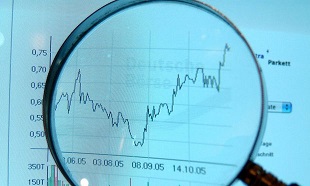 I’m going to start a new series of articles on building a rules-based trend following model. For a host of reasons, I cannot provide readers complete details of the trend following model I currently use, but I can simulate most of the concepts in various examples, so you will have a good feel for how it works and what is required. This article will lay out some of the concepts I plan on covering over the next few months. I’m quite sure this series will be interspersed with articles on other topics, so I’ll use my normal article titling by adding 2, 3, etc. to the above title.
I’m going to start a new series of articles on building a rules-based trend following model. For a host of reasons, I cannot provide readers complete details of the trend following model I currently use, but I can simulate most of the concepts in various examples, so you will have a good feel for how it works and what is required. This article will lay out some of the concepts I plan on covering over the next few months. I’m quite sure this series will be interspersed with articles on other topics, so I’ll use my normal article titling by adding 2, 3, etc. to the above title.
I will try to use as many of StockCharts.com tools and indicators as I can, but I know at this point I cannot use them for everything. A large number of the charts and tables will be from Microsoft Excel. Hence, the model we build will be considerably simpler, but the gaps will be filled with much commentary. The goal is that you will have a good understanding of the model building process, and from that understanding, you can build your own rules-based trend following model.
Concepts to Cover:
Description of Digital and Analog Measures
Description of Compound Measures
Introduction into the Weight of the Evidence
Price Measures
Breadth Measures
Relative Strength Measures
Misc. Measures
Early Warning Measures
Price
Volume
Breadth
Misc.
Ranking and Selection Measures
About 20 total
Explain the need for mandatory and tie-breakers
Pullback Rally Analysis
Rules and Guidelines
Buy
Sell
Trade up
Misc.
Asset Commitment Tables
Weight of Evidence levels and Early Warning Point System
Overlay Measures
LTM
MTM
Trend Gauge
Putting it all together
Performance Analysis
I plan on following the above outline as much as possible; but of course, reserve the right to change it as I move forward. Finally, the entire success of a rules-based trend following model is not the model itself, but your disciplined execution of it. Remember, it isn’t always the fiddle, it is the man who holds the bow.
Dance with the Trend,
Greg Morris
